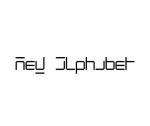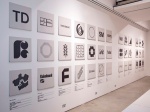The task of the designer consists of analysing the design project and solve the problems he distilled in an objective way. The message and the way it should be presented flows out of this process. Graphic design is a wide field in which Crouwel mainly focussed on type. He works quite constructive, constructs type, and works on grids. Crouwel is especially admired for his systematic approach and his creative handling of the shape of letters. His work was influenced by the pre-war Werkmann and post-war Sandberg, an individualistic generation of typographers who dared to juggle with letters.



